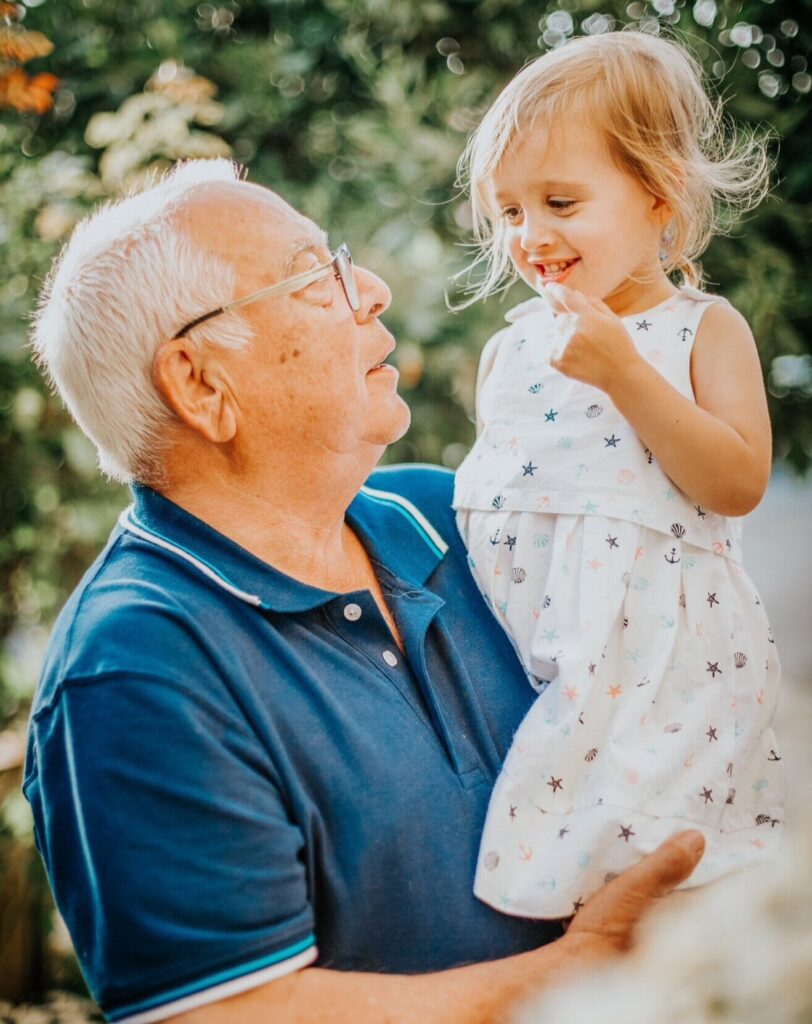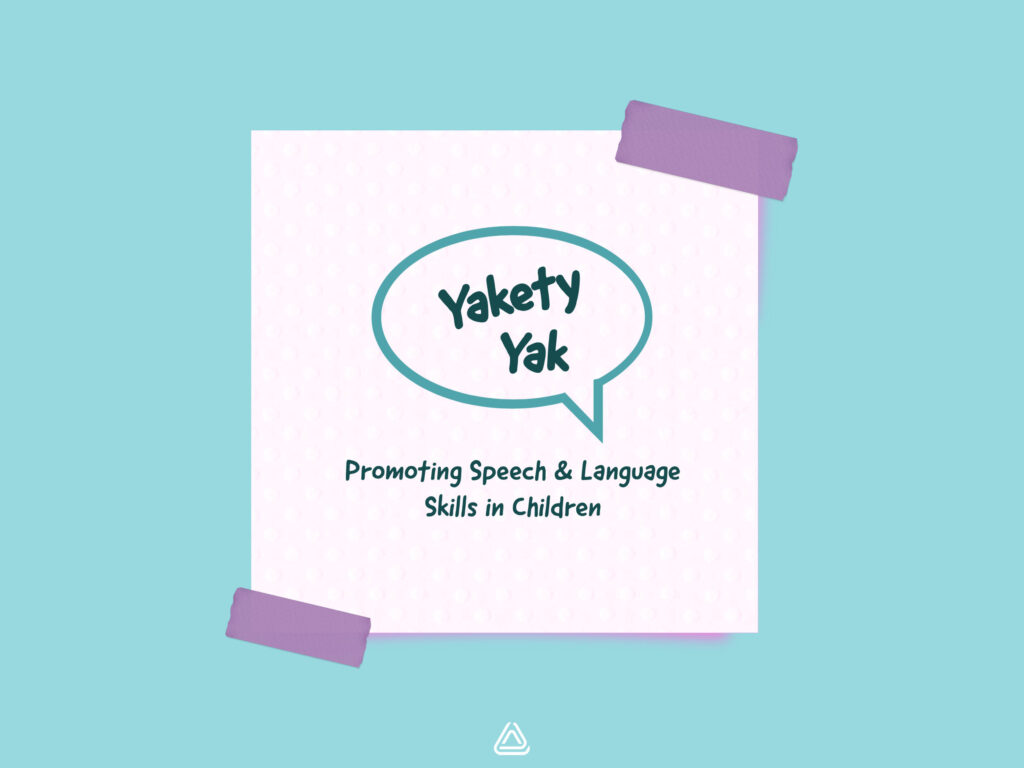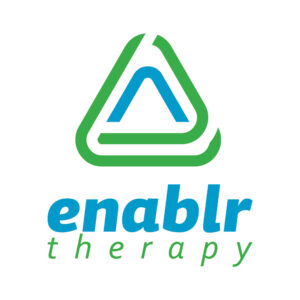
A child’s speech and language skills are developed as a child interacts with the world around them. Play, movement activities, social interactions, object manipulation, and sensory experiences all work together to build thinking and language skills. Babies communicate their needs through crying and laughing behaviors. As the child gets older, they start to add gestures and words to express their needs/wants and engage others.

Although each child develops language at their own unique pace and with their own unique vocabulary and style, most children achieve speech and language milestones around the same age. Helping a child to develop speech and language skills is important in promoting social interactions, thinking skills, and behavioral regulation. Children can become frustrated when they are unable to communicate.
If you have concerns about your child’s communication skills, click here to contact us. Enablr Therapy has a team of talented speech language pathologists that can work with your child and family to promote speech and language skills and help your child reach their full potential.
Parents and others in a child’s life can also create language-rich environments to help build speech and language skills.
Strategies for Developing Language Skills

Gaining the attention of the person that you are talking with is the first step in communicating. It is important to show a child that you are listening to them and to teach them how to appropriately gain the attention of others.
Example
Babies: When a baby makes sounds, look at him/her and talk back when there is a pause in the vocalizations to have a “conversation.”
Older children: Get down on the child’s level when talking to them and give eye contact. Teach the child how to get your attention by saying your name and looking at you when they speak. The child can also learn to gently place their hand on your arm as a way to gain your attention. It is okay to ask a child to wait a moment if you are in the middle of something else. Once you are ready, tell them that you are ready and give them your full attention.

This works best with children who are not using words yet. With this technique, you mirror or imitate what your child is vocalizing or doing. By mirroring what they say and do, you are showing them that you are paying attention to them and that their communication matters to you.
Example
Child: Claps hands while saying “da da da”
Parent: Claps hands and says “da da da”
Once the child understands that you are following their lead, you can try to take the lead occasionally to see if the child will imitate your sounds or actions. This leads to turn taking.


Work with your child to take turns with conversation and actions. Be sure to pay attention to your child when it is their turn to talk and give the child an opportunity to lead the conversation as well.
Example
Child: “Car”
Parent: “That is a red car just like our car.”
Child: “Beep. Beep.”
Parent: “Beep. Beep. The car is honking. Which car is your favorite?”
Child: Picks up a car and brings it to the parent.
Parent: Pushes car to the child.
Child: Pushes car back to parent. “Go Na”
Parent: “Are you driving the car to Nana’s?”

Restate or reflect what the child has said using the proper pronunciation or grammar. This is helpful when a child has made an error in their speech or language use. The parent can provide a model without pointing out the error or causing frustration by having the child try to repeat back the word(s).
Example
Child: “He is a girl.”
Parent: “Yes, she is a girl.”
Child points to a car, “Tar.”
Parent: “That is a car.”

Build on what your child has said to expand their vocabulary. Add a few words to make a longer sentence.
Example
Child: “Red car.”
Parent: “The red car has 2 doors” or “The red car is going fast!”
Child: “Milk”
Parent: “You want milk.” or “The milk is in the cup.”

Talk out loud about what you or the child is doing, seeing, experiencing, thinking or feeling. Keep the language level just a little higher than the child’s language level to model and develop more vocabulary without overwhelming the child.
Example
The parent is making a sandwich.
Parent: “I am hungry. I am making a sandwich. I put ham on the bread. Now. I get the cheese. I put the cheese on top. I add another piece of bread. Now I am ready to eat. Yum!”
Child is playing with blocks.
Parent: “You are putting the yellow block on the red blocks. You built a tower! You look happy and proud!”

Ask your child questions and wait for responses. For children with limited vocabulary, choices can be provided. Children with a larger vocabulary can be asked open ended questions.
Example
Child getting picked up from preschool. “What was your favorite part of school today?” “Who did you play with at recess?” “What was your story about today?”
Parent holding a couple of books. “Which book do you want to read?” Wait for the child to respond with gestures or words (depending on the child’s communication level) before opening the selected book to read.

Read picture books to your child. Books provide an opportunity to use and learn a wider variety of vocabulary while providing visual support for the concepts that are being learned.
Example
Ask the child to point to particular pictures or point to a picture and ask them to say what it is.
Ask, “What do you think will happen next?” or “How do you think they feel?”
For children with a larger vocabulary, ask them to retell the story when you are done reading.

Kids need lots of repetition to learn and master new skills. Sometimes parents and others anticipate a child’s needs before they actually ask, limiting their opportunities to practice talking. By intentionally setting up situations for a child to make requests, a parent provides time to practice talking.
Example
Place an object that a child wants or needs just out of reach so that they must ask to get it. For example, place their favorite toy on a shelf or their snack in the center of the table where they can’t reach.
Limit the number of items that you give a child or forget to give them something altogether so that they need to request the missing item or ask for more. For example, when they want to play with a puzzle or blocks, only put a couple of pieces in reach and withhold the others until the child asks.
Enablr Therapy speech language pathologists are knowledgeable and gifted at working with kids of all ages and abilities. View our therapy services page to learn more about how Enablr Therapy works with kids.



